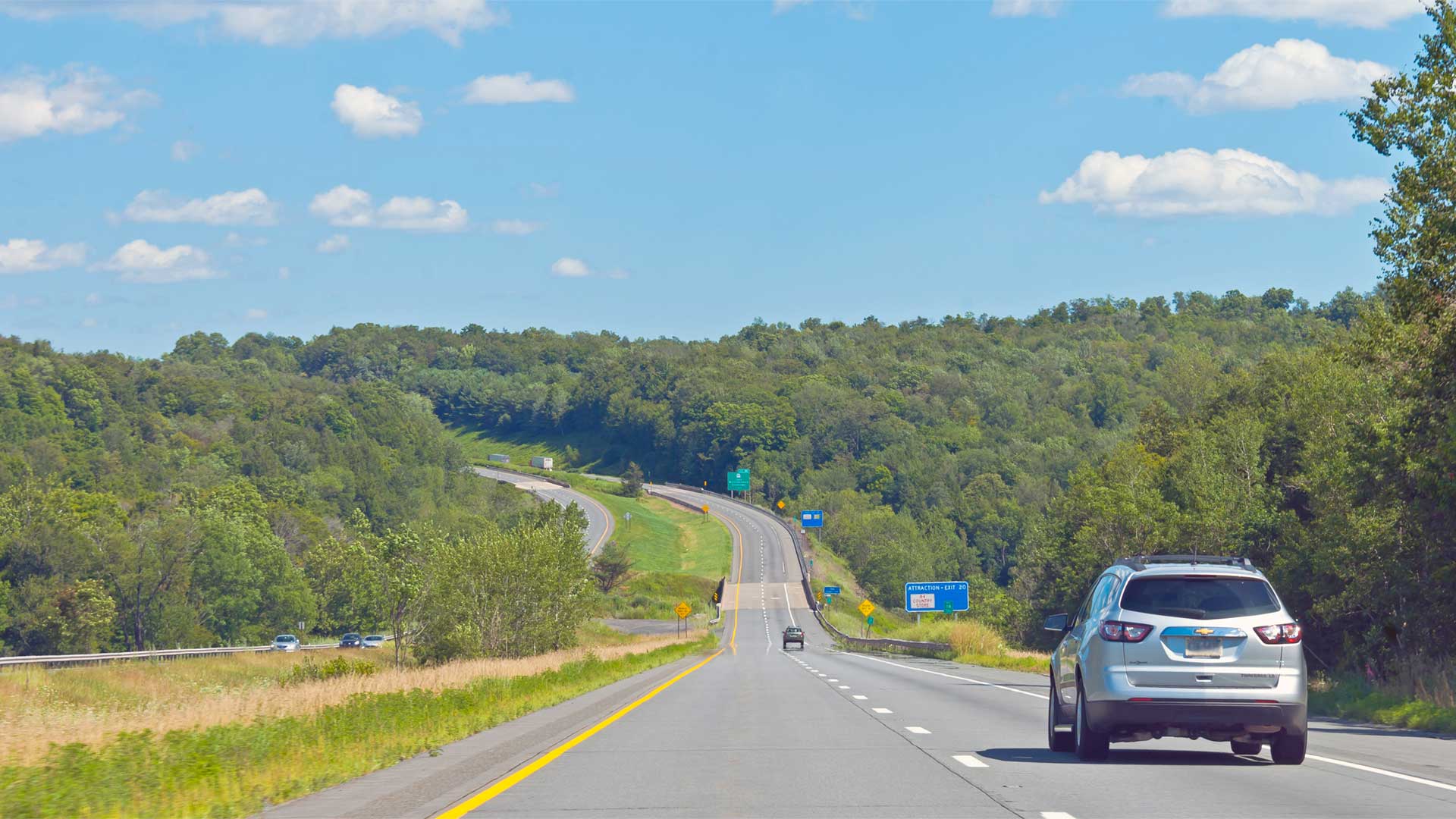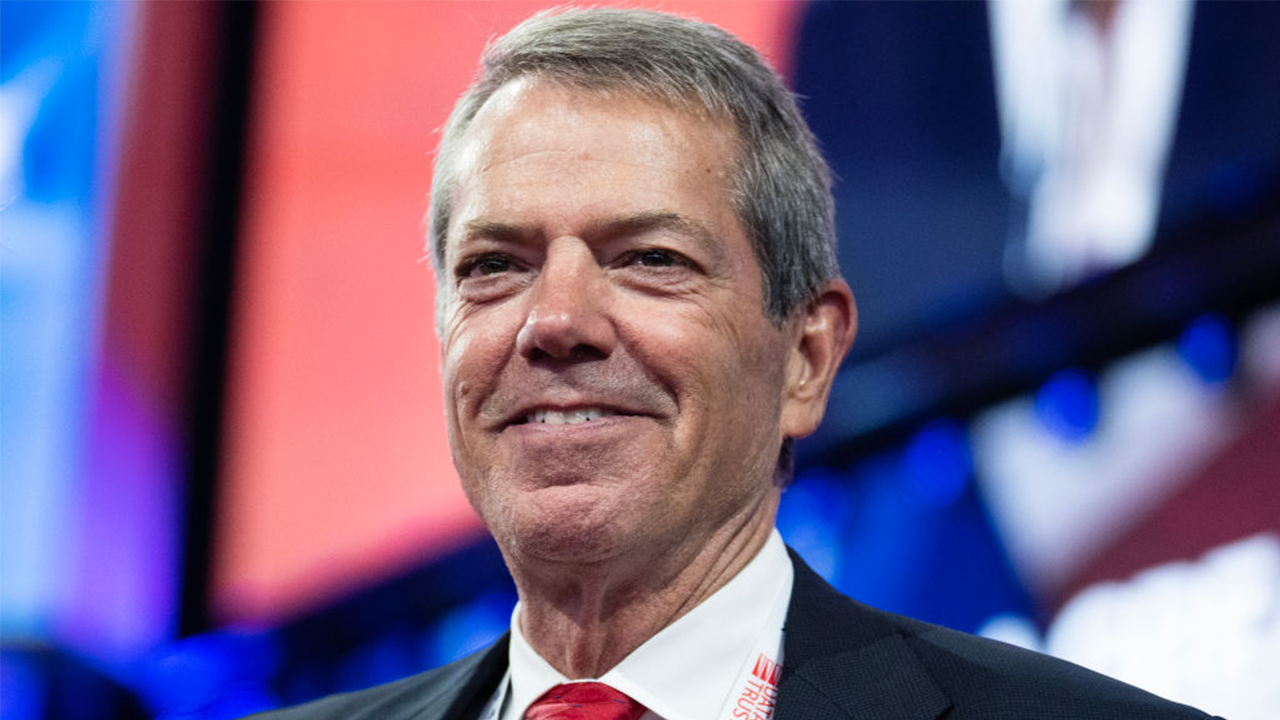Republished with permission from Lucian K. Truscott IV
Today the weather is in the mid-50’s and sunny, by any reasonable measure a beautiful fall day, we are in Northeast Pennsylvania, a battleground state if there ever was one, so let’s take a ride and have a look at the tail end of this endless campaign.
I know how we can do it! We can drive down the same roads that thousands of people took on Thursday, when they drove from the surrounding areas, northern New Jersey, and as far away as Middletown, New York, to get to Milford, the region’s best site for trick-or-treaters for many years. Milford is a small town, laid out on a grid atop the bluffs above the Delaware River, easy to park and get out with your kids and set off along the town’s wide streets so the kids can visit the many homes that are all set up with huge bowls of candy amid colorful—and appropriately scary—Halloween decorations.
At our house, we had more than a thousand kids, most of them with their parents. We know the number because we buy candy every year from Amazon in orders that specify the numbers of candy in each bulk package. We ordered 1,000 pieces this year and supplemented it with 15 or so extra bags from Walmart. By 8 p.m., we were out.
The families that showed up at our doorstep were mainly middle class, and they had gone all out with costumes for their kids and often for themselves. One couple came dressed as Ghostbusters, both mom and dad, and their kids were decked out similarly. I looked up the costumes. Mom’s and dad’s cost between $40 and $60 each, and the kids, three of them, cost between $30 and $40. So that’s around $200 in costumes right there. I walked our dog Ruby down the street during the festivities and checked out what cars the trick or treaters had arrived in.
There were massive SUV’s of recent vintage, more than a few of them foreign, as in BMW’s and Mercedes, and the usual collection of Volvo’s and Subaru Outbacks, and there were Ford F-150 and GMC and Dodge Ram pickups galore. The family cars like Volvos and Subarus go for $30,000 to $40,000 for recent models, which most of them were. The BMW’s and Mercedes and larger American SUV’s like Lincoln Navigators and Cadillac Escalades cost a lot more. A Cadillac Escalade will set you back $80,000 to $90,000. Mercedes SUV’s start around $50,000 and move quickly in the direction of $70-80,000 depending on model and options and can top out at more than $100,000 with some models approaching $200,000. Premium pick-up trucks start at $60-70,000 and can get a lot more expensive with add-ons like extra steel bumpers and bedliners and covers.
Most of the newer late model cars and SUVs and pick-up trucks I saw along our street had all the modern bells and whistles—back up cameras, eight to ten airbags, cruise control that adjusts your speed to match the traffic, disc brakes, premium stereo systems set up for Bluetooth phone and Spotify. If you spend around $30,000 for a car these days, you also get a self-driving lane-keeping feature that will take over the driving for you on long trips on freeways so long as you either keep your hands on the wheel or touch it occasionally.
Suffice to say that most of the families we encountered on Halloween night here in Milford were not hurting for money. I don’t know the political leanings of the parents, but living in this part of Pennsylvania, I have my suspicions. However, the “third world” economy Donald Trump claims that Kamala Harris and Joe Biden have presided over was nowhere in evidence in Milford on Thursday night.
So, let’s imagine we’re a family driving the 25 miles from Middletown, New York, to Milford, Pennsylvania. They would take I-84 for that trip. That interstate highway, with two exits near Milford, is 375 miles in length and runs from Sturbridge, Massachusetts to Scranton, PA. It’s part of the Interstate highway system that was conceived of by President Eisenhower and built, beginning in the late 50’s and early 60’s, with federal funds to connect the east and west coasts and the Gulf of Mexico and our southern border with our northernmost states along the Canadian border. Like the rest of the interstate highway system, I-84 is a wonderful road—four lanes most of the way, with extra lanes for sections that go over steep hills and through large metropolitan areas. Like the rest of the interstate system, I-84 was built with federal funds derived from gasoline taxes, which since 1993 have been 18.4 cents on the gallon. States add in their own gas taxes. Pennsylvania adds 57.6 cents per gallon. If you buy gas in Middletown, you pay about 47 cents per gallon extra in a combination of New York state taxes.
For those little piddling taxes, you get to drive on a road at 65 miles per hour that will get you from Middletown to Milford in about 32 minutes, including the distance you have to drive on U.S. Route 6 after you leave the interstate.
Let’s discuss Route 6 for a moment, because roads tell us so much about this country and its recent history. It’s an interesting road, running from Providence, Rhode Island to Bishop, California, a distance of 3,200 miles, making it the longest contiguous U.S. highway in the country. It’s a two-lane road through most of its sections. In Pennsylvania, it’s maintained by the PA Department of Transportation with help from the Federal Highway Administration (FHWA), which supports state and local governments in maintaining the nation’s highway system that is not part of the interstate system. The FHWA began its life as the Office of Public Roads under the Department of Agriculture. Over the years, the agency was part of the Public Roads Administration, then the Bureau of Public Roads under the Commerce Department, and then in the 1960’s it ended up as part of the Department of Transportation, currently under the leadership of Pete Buttigieg.
Most of this federal road building came into being after 1919, when the U.S. Army sent a Motor Transport Convoy across the country on the Lincoln Highway, U.S. 30, the first coast to coast road across the country. The convoy left the Ellipse near the White House—yes, the same one of recent political rallies—and traveled 3,200 miles to the Presidio of San Francisco. It was an experiment to see what it would take if the military had to ship material across the country. The trip across the country took 62 days. Dwight D. Eisenhower, then a Lieutenant Colonel, went along on the trip and later described some of the road as “a succession of dust, ruts, pits, and holes.” That journey was the genesis of the nation’s grid of highways that would soon be built.
In 1921, the Federal Highway Act was passed, providing federal matching funds to states for road construction. In 1922, the military, under General John J. Pershing, came up with a map of 20,000 miles of interconnected highways the military deemed necessary for national defense. This led to the Numbered Highway System, setting out east-west roads like Routes 30, 40, and 50, and north-south roads like Routes 1, 11, 31 and 41. And those roads led under Ike to the Interstate Highway System and roads like I-84.
This is not ancient history. I grew up visiting both sets of my grandparents who drove on those pot-holed and pitted and dusty dirt roads when they were assigned to move from one army post after another in the 1920’s. My Truscott grandparents lived on a dirt road in Loudon County, Virginia, when I visited them as a boy. When he was the head of the Army Corps of Engineers for the Works Progress Administration in the 1930’s, my paternal grandfather, Colonel Bartley M. Harloe, oversaw the construction of thousands of miles of roads and thousands of bridges over small streams around the country, many of them still in existence and marked on their concrete stanchions with the letters “WPA.”
Let me tell you something about I-84 and Route 6 through Milford and the streets of Milford themselves. There are no potholes. The main roads like Route 6 are marked with white lines along the sides and yellow lines down the middle, same with I-84. There are stoplights at important intersections and stop signs at smaller ones. The roads are, by design and construction and regulation, very safe.
All of this…all of it…has been paid for with tax dollars.
I scoured local Facebook pages and other local news to see if there had been any accidents on local streets and roads on Thursday night after the thousands and thousands of people had driven from all over this three-state area to Milford, and there weren’t any.
So, all those families who drove up Route 206 from New Jersey, and along Route 6 and I-84 from New York, and down Route 97 from Shohola and along Route 434 from Greeley, and up Route 23 from Hamburg…all those families in their SUVs and pick up trucks and Volvos and Chevrolets with their cruise control and disc brakes and airbags and back up cameras…all of them were safe because of federal regulations that provide for the safety of passengers in automobiles and the safety of automobiles from one another on highways. And all of them were safe because of an interlocking system of federal, state, and local departments of transportation and laws regarding licensing and road safety and driving regulations, like no turning left out of the right-hand lanes and every other safe-driving law you can think of.
Oh, by the way, policing I-84 were state cops from New York and Pennsylvania, and policing Route 6 were cops from Milford and Matamoras, PA, and policing roads in New Jersey were cops from Sussex County, and roads further into the Poconos were policed by cops from Pike and Wayne Counties, and streets and roads around Middletown were policed by cops from Orange County.
Those cops were paid with tax dollars out of the pockets of all the parents of all the kids who climbed our front steps and took more than 1,000 pieces of candy from our big wooden salad bowl.
Take a ride in a car on any streets or local roads or interstate highways, and drive anywhere you want to go. Thanksgiving is coming. In a few weeks, you can drive to your nearest airport and get on a plane and fly to visit your grandparents or your kids…or your kids can fly to visit you. Or they can drive. Or you can drive. AAA will tell us the week of November 28 how many miles will be driven by how many tens of millions of Americans to visit friends and family for Thanksgiving.
All those miles, driven or flown, will be kept safe because federal agencies like the Department of Transportation and the FAA and state departments of transportation and local police departments and state police will be enforcing a complex web of laws and regulations that have been developed and put into force over decades.
They work. If you follow the traffic laws and you fly on federally regulated airlines, you will reach your destination, both going and coming, just like the families who came to our house on Halloween for candy.
Be safe and be thankful. Even given the problems we have with poverty and want, the United States is not the “failing country” that Donald Trump says we are. Vote accordingly.

















